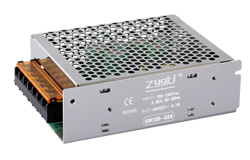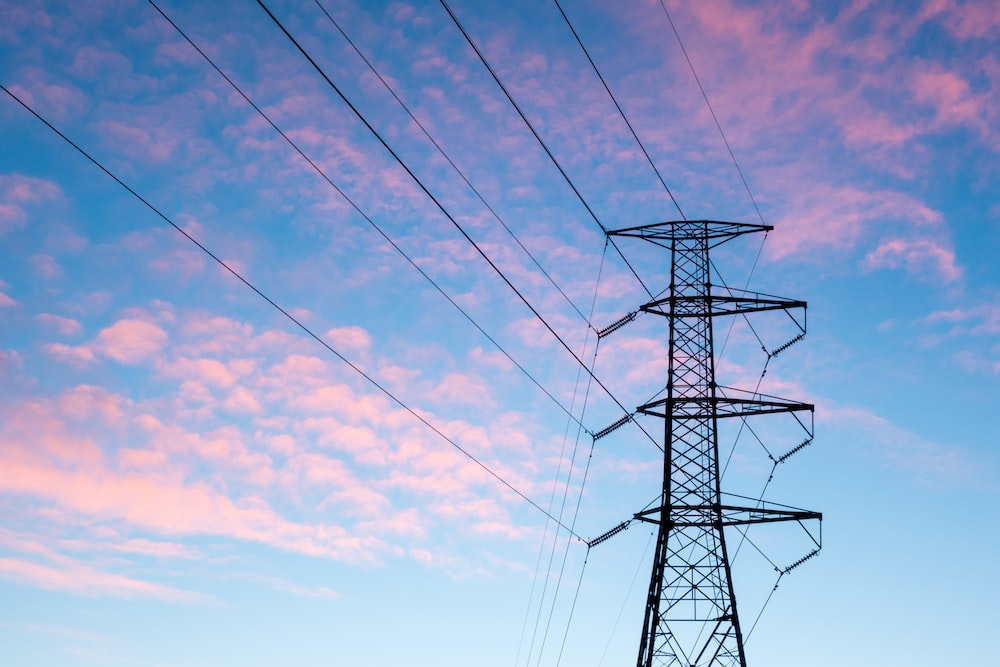noticias
AC-DC Power Supply: A Complete Guide
Autor: Módulo de potencia ZYG Time: 2023-5-5
AC-DC power supply is a device that converts alternating current (AC) to direct current (DC) for use by electronic devices. The output voltage and current of a power supply can be regulated to meet the requirements of different electronic devices. In this guide, we will discuss the different types of AC-DC power supplies, their applications, and how to select the right power supply for your needs.
Types of AC-DC Power Supplies
There are two basic types of AC-DC power supplies: linear and switching. Linear power supplies use a transformer to convert AC input voltage to a lower AC voltage, which is then rectified and regulated to produce a DC output voltage. Switching power supplies use high-frequency switching to convert AC input voltage to DC output voltage.
Linear Power Supplies
Linear power supplies are simple and reliable, with low output ripple and noise. They are commonly used in low-power applications such as audio equipment and small electronic devices. However, they are less efficient than switching power supplies and tend to be larger and heavier.
Switching Power Supplies
Switching power supplies are more efficient than linear power supplies and are commonly used in high-power applications. They are lighter and smaller than linear power supplies and offer higher output power density. However, they can produce more electrical noise and may require additional filtering to reduce electromagnetic interference.
Applications of AC-DC Power Supplies
AC-DC power supplies are used in a wide range of electronic devices, including computers, televisions, mobile phones, and household appliances. They are also used in industrial applications such as motor control and lighting systems. In addition, they are used in medical equipment and aerospace applications.

Selecting the Right AC-DC Power Supply
When selecting an AC-DC power supply, it is important to consider the following factors:
1. Output Voltage and Current: The power supply should provide the correct output voltage and current for the device being powered.
2. Efficiency: The efficiency of the power supply affects its operating temperature and energy consumption. A more efficient power supply will produce less heat and consume less energy.
3. Regulation: The output voltage and current of the power supply should be regulated to ensure stable and reliable operation.
4. Noise: The power supply should produce low levels of electrical noise to avoid interference with other electronic devices.
5. Safety: The power supply should meet safety standards such as UL, CE, and FCC.
6. Reliability: The power supply should be reliable and durable, with a long service life.
Conclusion
AC-DC power supplies are essential components of electronic devices, providing the necessary DC voltage and current for operation. Linear and switching power supplies are the two main types of AC-DC power supplies, each with its advantages and disadvantages. When selecting a power supply, it is important to consider factors such as output voltage and current, efficiency, regulation, noise, safety, and reliability.
Anterior: Industrial AC-DC Converter: Powering Your Operations with Reliable Efficiency
Próximo: Designing an AC-DC Converter Circuit
informacion relevante
-
2023-9-19
DC Power Supply Module: Delivering Reliable and Efficient Power Solutions
Introduction: Where electronic devices have become an integral part of our daily lives, the need for a reliable and efficient power supply has never been greater. Whether it is for industrial applications, telecommunications, or consumer electronics, the DC power supply module plays a crucial role in delivering the necessary electricity to ensure the smooth functioning of these devices. This article aims to explore the importance of DC power supply modules, their features, and their applications. Importance of DC Power Supply Modules: A DC power supply module is a device that converts alternating current (AC) into direct current (DC) and regulates it to deliver a stable and constant voltage or current output. It acts as a backbone for various electronic systems...
Ver detalles -
2023-6-7
How to Convert 110V AC to 12V DC?
Converting 110V AC to 12V DC is a process that is often necessary when it comes to powering certain electronic devices and appliances. While it may seem like a complicated process, it is actually quite simple and can be done using a few basic tools and materials. In this article, we will go over the steps you need to follow to convert 110V AC to 12V DC. Step 1: Gather Your Materials Before you begin, you will need to gather all the materials you will need for the conversion process. These materials include a step-down transformer, a rectifier, filter capacitor, and voltage regulator. You will also need a soldering iron, solder, wire, and a multimeter. Step 2: Connect the Transformer...
Ver detalles -
2023-2-11
AC-DC Converter Manufacturers:everything you should know
If you're in the market for an AC-DC converter, there are a few top manufacturers you should know about. In this blog post, we'll take a look at the top five AC-DC converter manufacturers and what makes them stand out from the competition. 1. What is an AC-DC converter? An AC-DC converter is a device used to convert alternating current (AC) to direct current (DC). This is important because most devices use DC power, and AC must be converted to DC for these devices to function. There are many different types of AC-DC converters, and each has its own advantages and disadvantages. Some of the most common types of AC-DC converters are power supplies, transformers, and rectifiers. 2. What are...
Ver detalles -
2023-4-23
Cómo conectar una fuente de alimentación de CA a CC
When it comes to converting alternating current (AC) to direct current (DC), there are several steps involved in the process. While it may seem complicated, with the right tools and some basic knowledge of electrical wiring, it is actually quite simple. In this article, we will provide a step-by-step guide on how to wire AC to DC power supply. Step 1: Choose the right power supply Before you begin the wiring process, it is important to choose the right power supply for your needs. You will need to consider factors such as the input voltage (AC), output voltage (DC), and current rating. Make sure that the power supply you select matches the requirements of the device or circuit you will...
Ver detalles -
2023-7-15
Bi-directional DC-DC Converter made in China: An Efficient Power Conversion Solution
Introduction In recent years, the demand for efficient power conversion solutions has seen a significant rise in various industries. One such solution gaining popularity is the bi-directional DC-DC converter. This technology enables efficient power conversion between two DC voltage sources, eliminating the need for bulky and expensive transformers. In this article, we will explore the working principle, advantages, and applications of the bi-directional DC-DC converter. Working Principle The bi-directional DC-DC converter operates by using power electronic switches and inductors to control the flow of energy between two DC voltage sources. It consists of two converter stages: the buck converter and the boost converter. The buck converter steps down the input voltage, while the boost converter steps up the voltage. These...
Ver detalles -
2023-5-15
Can you convert 12V AC to 12V DC?
Yes, it is possible to convert 12V AC to 12V DC. This process involves the use of a device called a rectifier, which is designed to convert AC voltage to DC voltage. A rectifier works by using diodes to convert the incoming AC voltage into a pulsating DC voltage. This pulsating DC voltage can then be further processed by a smoothing capacitor, which filters out the pulsations and provides a steady DC voltage output. There are two main types of rectifiers used to convert AC to DC: half-wave rectifiers and full-wave rectifiers. A half-wave rectifier only allows half of the incoming AC waveform to pass through, while a full-wave rectifier allows the entire waveform to pass through. Full-wave rectifiers are...
Ver detalles


















